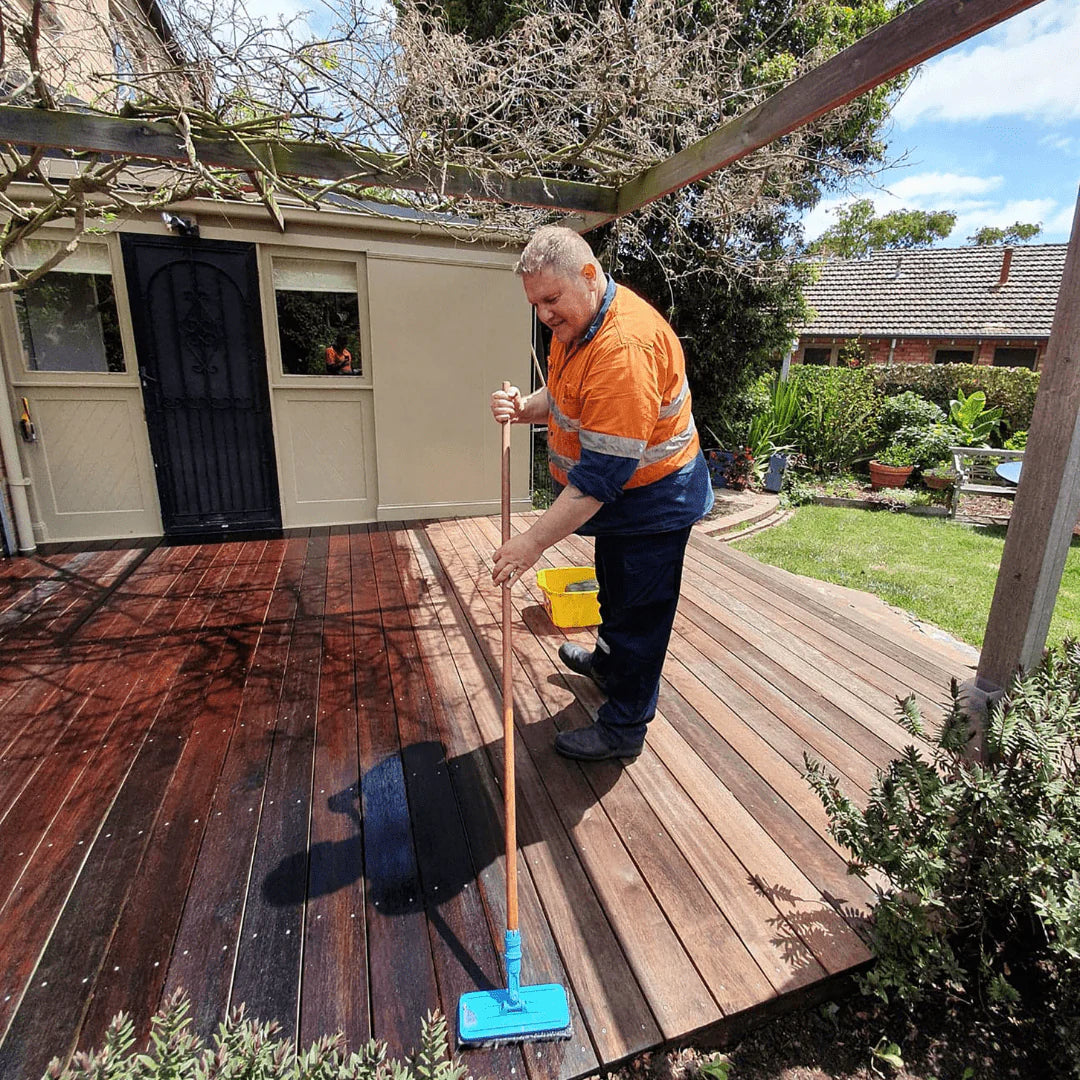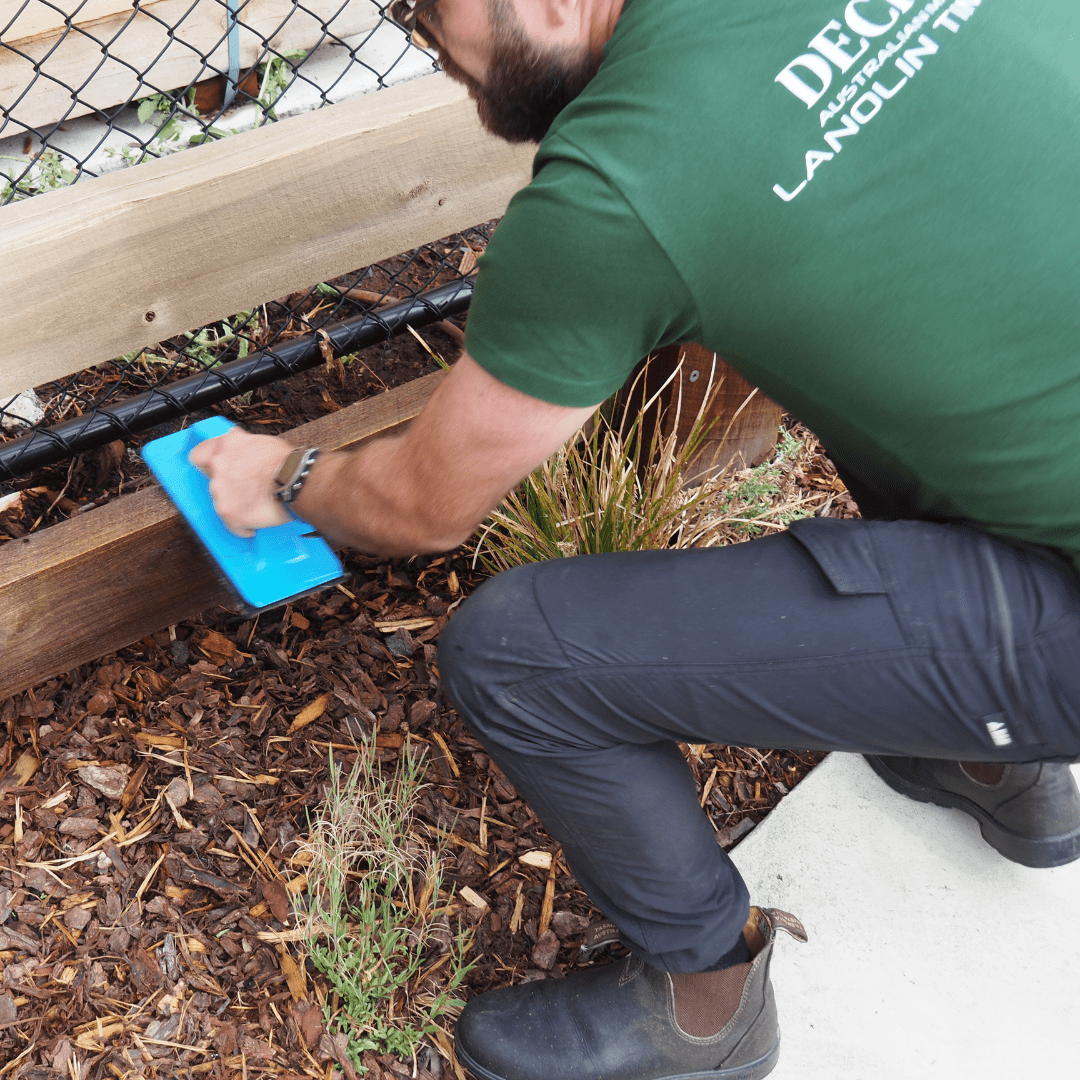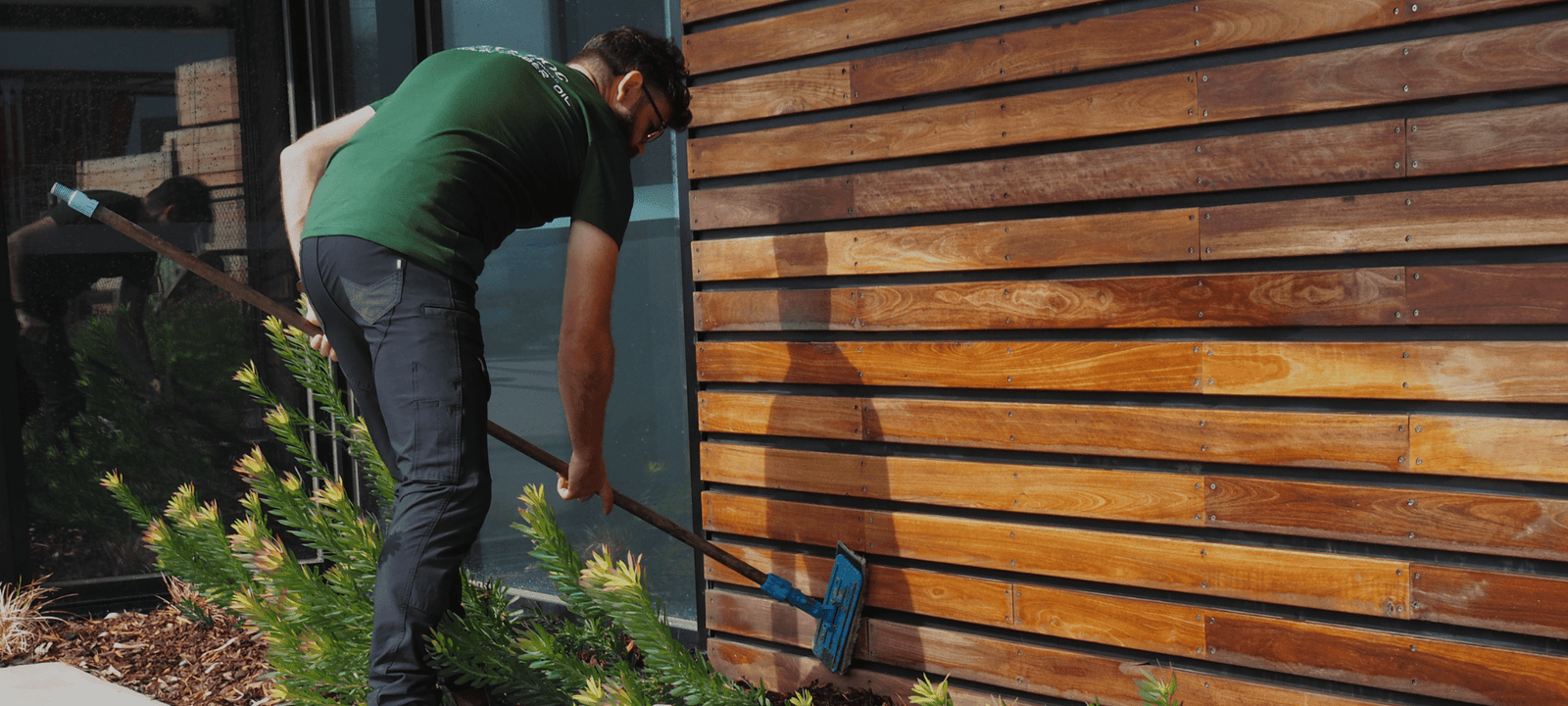Beginner's Guide To Timber Oil Application
When it comes to looking after your deck, oiling is one of the most effective ways to protect timber and bring out its natural beauty. But if you’re new to deck care, applying timber oil can feel intimidating. It’s easier than you think but there are a few common traps beginners often fall into. Applying too much oil, skipping the prep, or rushing the drying time can all leave you with a sticky, uneven finish.
This guide will walk you through the process step by step, highlight the biggest mistakes to avoid, and share some golden rules to keep your timber deck looking its best.
Common Beginner Mistakes
Even the best DIYers sometimes get it wrong. Here are the most common decking slip-ups we see and how to avoid them.
Oiling Too Soon
New timber often needs time to weather to allow natural oils and tannins to leach from the wood improving oil absorption and preventing a patchy finish. However, some oils like Deck Doc don't need timber to be weathered so always check with your local hardware store or supplier.
Skipping The Clean
Dirt, mould, or old coatings prevent oil from soaking in properly, leading to patchy results. We always recommend cleaning and prepping your timber surface before oiling. There are many options available including sanding, pressure washing or using a specifically designed timber cleaner.
Over-oiling
Beginners often assume more is better but your timber can only absorb so much. Excess oil just sits on the surface, making it tacky, sticky or slippery. We recommend applying one coat and removing any excess oil - but we'll get into that later.
Wrong Product For The Job
Not all deck finishes are created equal. Some seal, some nourish, some peel (yikes). Make sure you're doing your research and choosing the right finish. We recommend a natural lanolin-based, penetrating oil for low-maintenance protection.


Step-by-Step: How to Apply Timber Oil
Prep the Deck
Clean thoroughly and let it dry for at least 24-48 hours. Make sure you’re working in dry, sunny conditions between 15°C–29°C.
Shake and Pour
Shake the container well and make sure the oil is properly mixed. Pour a workable amount into a clean bucket or tray so your applicator is easy to dip into. Always refer to product specific instructions.
Apply Light Coats
Use your applicator such as a mop or pad for smooth, even coverage. Work the oil into the timber in a thin layer. Remember applying too much at once can leave the surface sticky and will only cause more work at the end to remove excess oil.
Work in Sections
Tackle about 2m² at a time. Apply both along the grain, then across it for full coverage. Use a small brush or a hand applicator for tight corners and handrails.
Wipe and Smooth
Remove any oil that hasn’t been absorbed. Swap to a scouring pad to drive oil deeper and smooth the surface. Allow to dry for 2-3 hours.
Buff and Check
Once dry, buff with a buffing pad for a natural sheen. Most decks only need one coat. Add a second only if the timber is very weathered.

Golden Rules
Always apply in dry, sunny weather
Always test a small patch before doing the whole deck.
Never reapply until the first coat is completely dry.
Don’t use oil on timber that’s been sealed with solid coatings.
Refresh annually: clean down, test water beading, and reapply oil if needed.
For beginners, the key to timber oiling is patience and restraint. Prep the surface properly, apply light coats, and let the timber absorb what it needs. By avoiding the common mistakes and sticking to the golden rules, you’ll give your deck the best possible protection and keep it looking good for years to come.




